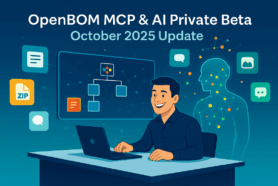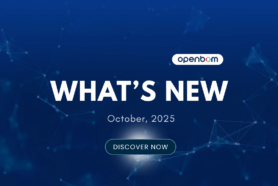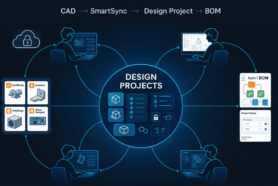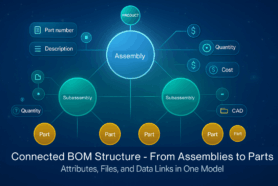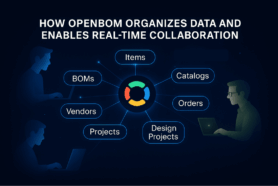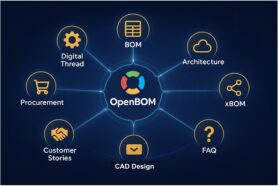
Revision control, an integral part of Product Data Management (PDM) and Product Lifecycle Management (PLM) systems, plays a crucial role in tracking changes and maintaining historical records of product iterations. While the concept isn’t novel, OpenBOM is spearheading a modern approach to revision control, which may seem unconventional at first glance and trigger questions.
However, if you look at the modern data management and lifecycle control systems (eg. Cloud CAD, GitHub, and some other systems) you will find the reason to redefine revision and change management mechanisms by introducing a concept of collaborative workspace and immutable revision snapshots.
In this article, we dig into the nuances of OpenBOM’s revision control mechanism and explore why it’s different.
Traditional Revision Control
Traditional revision control typically involves creating independent records for each revision. Commands like “Create a Revision” are straightforward, resulting in the generation of a revision with a designated name or number, often marked as “not released.” This method is common in PDM systems, where revisions are initiated through actions like Check-out/Check-in.
While this approach isn’t inherently flawed, it has its limitations, which prompt the need for reevaluation. The main level of complexity is related to the situation when you need to have the same mechanism to work collaboratively in multiple domains (eg. mechanical, electrical, software, etc). The biggest complexity is to synchronize all events of revision creation and releases.
Limitations of Existing Methods
The conventional approach assumes upfront revision creation, a model suited for single-CAD/PDM environments. However, with the advent of multidisciplinary structures, where data is generated concurrently across various design domains (mechanical, electronic, software), initiating revisions for each item becomes cumbersome and impractical.
In this evolving landscape, collaborative workflows demand a more flexible and synchronized approach to revision control.
OpenBOM’s Innovative Revision Control
OpenBOM introduces a paradigm shift with its innovative revision control mechanism, anchored by the concept of a “workspace” or “Latest State.” This state allows multiple users to edit, update, and create data simultaneously in real-time without imposing locks.m
OpenBOM “latest” workspace support real time data sharing and automatic change tracking to capture changes that are done by multiple people and applications simultaneously.
The critical departure from traditional methods lies in the process of saving revisions. Instead of predefining revisions, OpenBOM enables users to collaborate seamlessly and initiate revisions only when consensus is reached (“to release”). This dynamic approach ensures that revisions accurately reflect the collective decisions and input of all stakeholders.
Comparison: Old vs. New
In the picture below you can see a high-level comparison between two principles of revision control. On the left – traditional revisions chain, on the right – workspace+revision control.
- Flexible Data Organization: OpenBOM’s approach facilitates real-time collaboration and updates, offering a more adaptable framework for data management.
- Granular Data Access: Users enjoy enhanced visibility and control over revisions, with changes saved only after consensus and formal approval.
- Streamlined Approval Process: Revisions are initiated post-approval, ensuring that only finalized iterations are archived.
Conclusion
OpenBOM’s modern data management approach empowers engineers and stakeholders to collaborate seamlessly, perform iterative design processes, and review changes in real-time. By embracing a flexible and synchronized workflow, OpenBOM aligns with the demands of contemporary product development strategies, enabling disparate user groups to work independently while remaining interconnected.
Register for free to experience the transformative capabilities of OpenBOM firsthand and unlock the full potential of collaborative product development.
Best regards,
Oleg
Join our newsletter to receive a weekly portion of news, articles, and tips about OpenBOM and our community.



